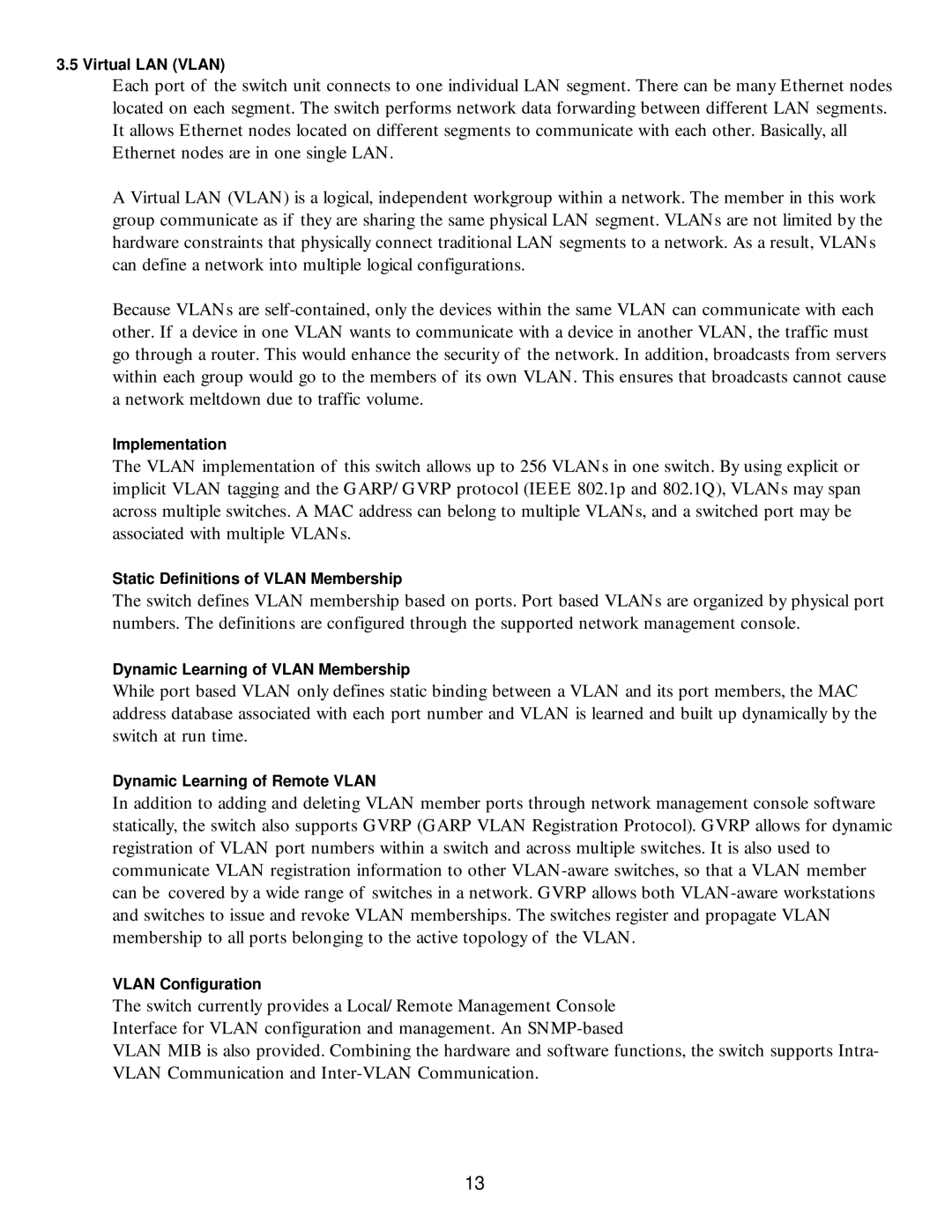3.5 Virtual LAN (VLAN)
Each port of the switch unit connects to one individual LAN segment. There can be many Ethernet nodes located on each segment. The switch performs network data forwarding between different LAN segments. It allows Ethernet nodes located on different segments to communicate with each other. Basically, all Ethernet nodes are in one single LAN.
A Virtual LAN (VLAN) is a logical, independent workgroup within a network. The member in this work group communicate as if they are sharing the same physical LAN segment. VLANs are not limited by the hardware constraints that physically connect traditional LAN segments to a network. As a result, VLANs can define a network into multiple logical configurations.
Because VLANs are
Implementation
The VLAN implementation of this switch allows up to 256 VLANs in one switch. By using explicit or implicit VLAN tagging and the GARP/GVRP protocol (IEEE 802.1p and 802.1Q), VLANs may span across multiple switches. A MAC address can belong to multiple VLANs, and a switched port may be associated with multiple VLANs.
Static Definitions of VLAN Membership
The switch defines VLAN membership based on ports. Port based VLANs are organized by physical port numbers. The definitions are configured through the supported network management console.
Dynamic Learning of VLAN Membership
While port based VLAN only defines static binding between a VLAN and its port members, the MAC address database associated with each port number and VLAN is learned and built up dynamically by the switch at run time.
Dynamic Learning of Remote VLAN
In addition to adding and deleting VLAN member ports through network management console software statically, the switch also supports GVRP (GARP VLAN Registration Protocol). GVRP allows for dynamic registration of VLAN port numbers within a switch and across multiple switches. It is also used to communicate VLAN registration information to other
VLAN Configuration
The switch currently provides a Local/Remote Management Console Interface for VLAN configuration and management. An
VLAN MIB is also provided. Combining the hardware and software functions, the switch supports Intra- VLAN Communication and
13
